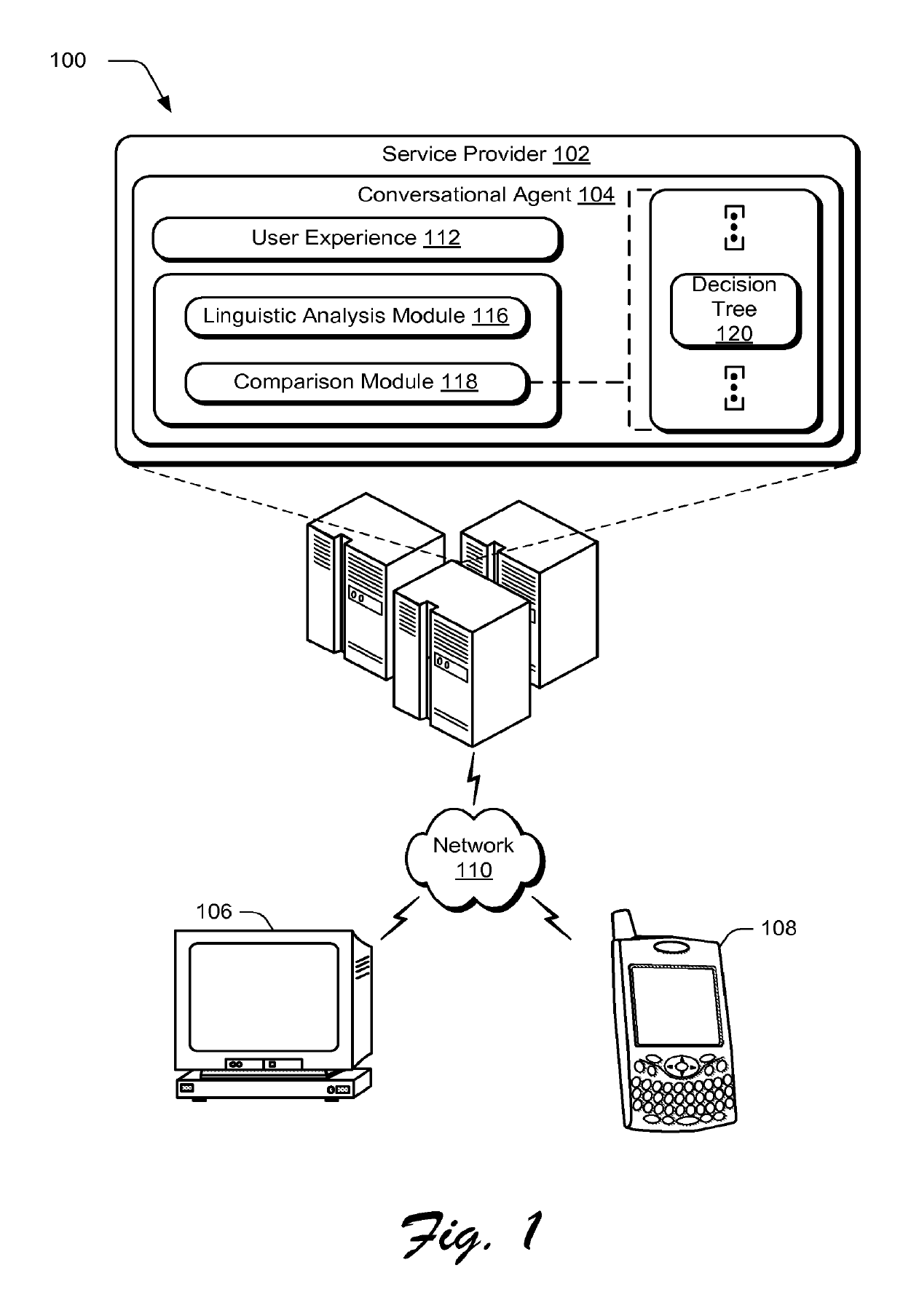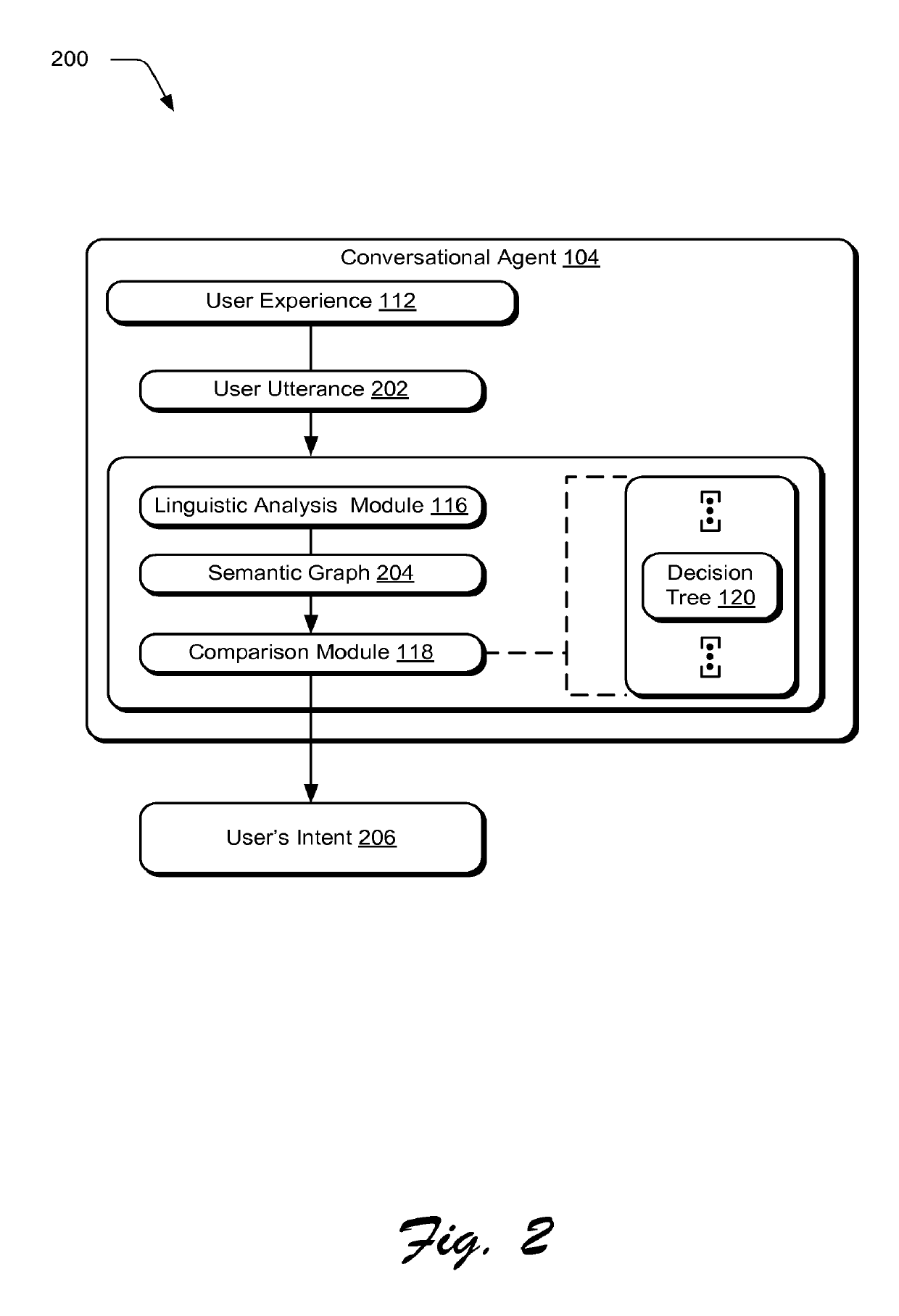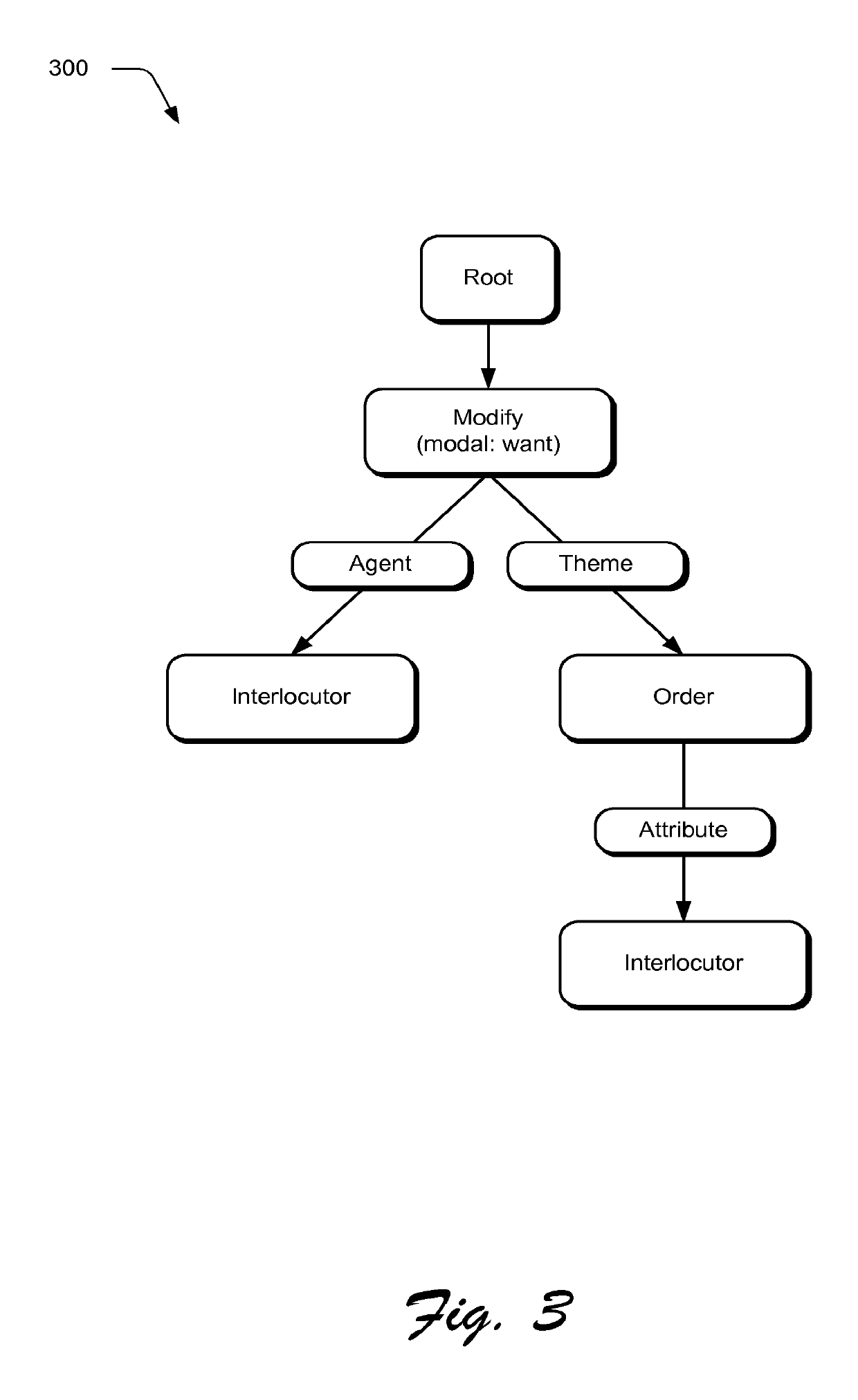Performing linguistic analysis by scoring syntactic graphs
a technology of syntactic graphs and linguistic analysis, applied in speech analysis, special data processing applications, instruments, etc., can solve the problems of users walking away from the website frustrated, the amount of information made available via these techniques is ever-increasing, and it is difficult for customers to locate desired information using traditional techniques
- Summary
- Abstract
- Description
- Claims
- Application Information
AI Technical Summary
Benefits of technology
Problems solved by technology
Method used
Image
Examples
example environment
[0025]FIG. 1 illustrates an example environment 100 that is operable to employ semantic clustering techniques for a conversational agent. The illustrated environment 100 includes a service provider 102 having a conversational agent 104 that is accessible to a plurality of client devices 106, 108 over a network 110. The client devices 106, 108 may be configured in a variety of ways. For example, the client devices may be configured as a computing device that is capable of communicating over the network, such as a desktop computer as illustrated by client device 106, a mobile station, an entertainment appliance, a set-top box communicatively coupled to a display device, a wireless phone as illustrated by client device 108, a game console, and so forth. Thus, the client devices may range from full resource devices with substantial memory and processor resources (e.g., personal computers, game consoles) to a low-resource device with limited memory and / or processing resources (e.g., trad...
example conversation
Strategy
[0032]Utterances that are received (e.g., spoken or typed by a user) are parsed by a linguistic analysis module 116 of the conversational agent 104 and may be matched by a comparison module 118 against a number of possible intents that are part of one or more decision trees 120. Based on the identified intent, the conversational agent 104 may then generate a reply. A conversation between the user and the agent may include one or more of these interactions between the user and the conversational agent 104.
[0033]A user's intent can be expressed in a variety of ways. For example, the user's intent may be configured as a single information request, may include a set of several potential information requests, and so on. In the latter case, the conversational agent 104 may ask for clarification until a specific information request is identifiable and may be satisfied.
[0034]In one or more implementations, conversations are modeled as paths through a set of decision trees 120, which...
outline example
Matching Algorithm Outline Example
[0067]Given an utterance and a current position in the conversational agent's 104 decision tree 120, the conversational agent 104 may perform the following steps to determine user intent:[0068]1. Retrieve the active patterns at a current position.[0069]2. Match each active pattern against the semantic graph of the utterance.[0070]3. Assign a matching distance to each successful match between the semantic graph of the utterance and an active pattern.[0071]4. Select the intent represented by the active pattern with the smallest matching distance.
[0072]If no successful match can be found in step 2 above, we say that the utterance is unmatched. In such a case, the conversational agent may not have the linguistic knowledge to assign an intent to this utterance.
Matching Distance
[0073]A number of metrics may be used to measure a distance between a graph of an utterance and a matching graph pattern in the conversational agent's knowledge. These metrics may ...
PUM
 Login to View More
Login to View More Abstract
Description
Claims
Application Information
 Login to View More
Login to View More - R&D
- Intellectual Property
- Life Sciences
- Materials
- Tech Scout
- Unparalleled Data Quality
- Higher Quality Content
- 60% Fewer Hallucinations
Browse by: Latest US Patents, China's latest patents, Technical Efficacy Thesaurus, Application Domain, Technology Topic, Popular Technical Reports.
© 2025 PatSnap. All rights reserved.Legal|Privacy policy|Modern Slavery Act Transparency Statement|Sitemap|About US| Contact US: help@patsnap.com



